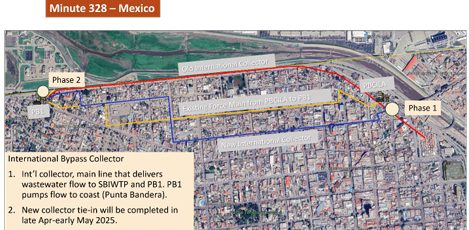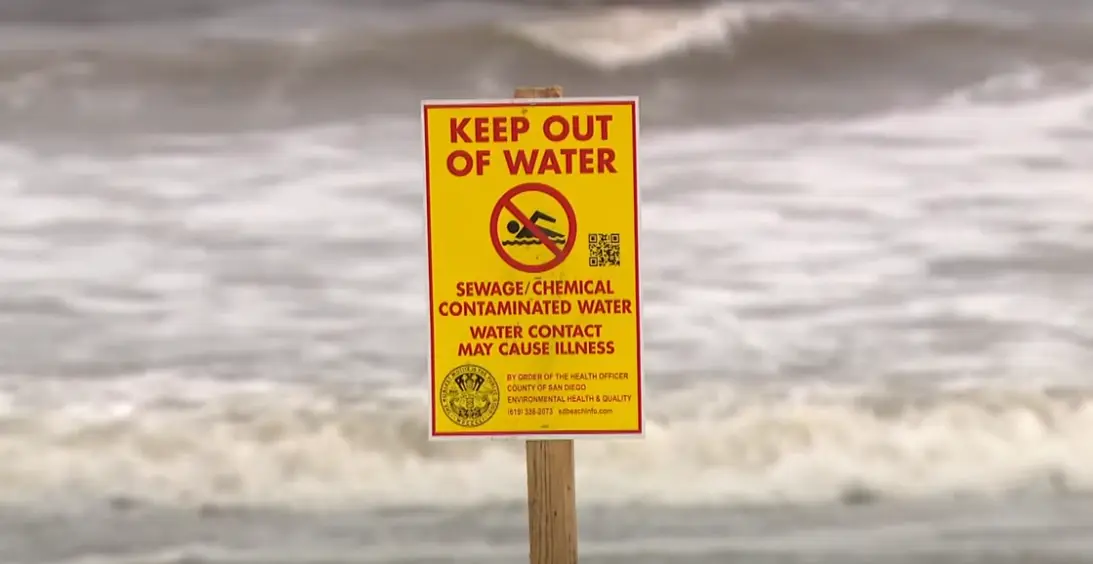- Final phase of a major sewage project began May 13, 2025.
- U.S. and Mexico work to prevent cross-border pollution.
- Over 50 million gallons of sewage rerouted daily during repairs.
- Upgrades will prevent catastrophic pipeline failures in the future.
Wednesday, May 14, 2025 — The International Boundary and Water Commission announced that the final stage of an urgent cross-border infrastructure project began yesterday along the Tijuana River, aimed at protecting both the environment and public health on both sides of the U.S.–Mexico border. The United States Section of the International Boundary and Water Commission (USIBWC), working alongside the U.S. Environmental Protection Agency (EPA), confirmed that Phase 2 of the International Collector rehabilitation was launched after months of coordinated planning with Mexican authorities.
that the final stage of an urgent cross-border infrastructure project began yesterday along the Tijuana River, aimed at protecting both the environment and public health on both sides of the U.S.–Mexico border. The United States Section of the International Boundary and Water Commission (USIBWC), working alongside the U.S. Environmental Protection Agency (EPA), confirmed that Phase 2 of the International Collector rehabilitation was launched after months of coordinated planning with Mexican authorities.
The work centers on a heavily-used section of pipeline between Mexican pump station PB-1 and Junction Box 1. The line directs sewage to the South Bay International Wastewater Treatment Plant, located just north of the border. For six days, approximately 120 feet of pipeline will undergo major repairs.
Diverting the Flow to Prevent Pollution.
The central challenge of this operation is simple but serious: how to stop untreated sewage from flowing into the Tijuana River while the work is being done. Without intervention, the wastewater would travel north across the border into Southern California. Instead, officials have arranged for roughly 20 million gallons of wastewater per day to be rerouted directly from PB-1 to the treatment plant through mobile pumps and hoses. Another 30 million gallons per day will be diverted south to a coastal treatment plant in San Antonio de los Buenos.
According to the May 9 press release , “Mexico considered discharging millions of gallons of wastewater into the river which now will divert to the plant, thanks to intense negotiations with USIBWC and EPA.” The rerouting prevents contamination of U.S. waterways, a problem that has plagued the region in recent years.
, “Mexico considered discharging millions of gallons of wastewater into the river which now will divert to the plant, thanks to intense negotiations with USIBWC and EPA.” The rerouting prevents contamination of U.S. waterways, a problem that has plagued the region in recent years.


A Revised Plan with Big Results.
The original plan called for completing the entire collector repair in one phase. That would have required several weeks of construction during which 25 to 30 million gallons of untreated wastewater per day might have entered the Tijuana River. However, at the urging of USIBWC, the EPA, and the U.S. Department of State, Mexico agreed to split the work into two phases.
The first phase ended on April 21 and was considered successful. Officials estimate that this two-phase approach has already prevented more than half a billion gallons of sewage from entering the river.
USIBWC officials also raised concerns about the potential for flow stoppages to the South Bay treatment plant during Phase 2. Stalling operations there for too long could jeopardize its biological treatment process. Those discussions led to revisions that should keep flows steady and protect the plant’s function.
International Collaboration Ongoing.
Mexico began 24/7 work on the project in late February. As of May 13, Mexican crews were finalizing installations of hoses and pumps for the bypass. Phase 2 began at midnight on May 13.
The USIBWC, which manages U.S.–Mexico water issues, has conducted multiple site inspections and continues to coordinate closely with Mexican agencies. The agency reiterated that this project is “critical to prevent potential catastrophic failures and increase the reliability of Tijuana’s wastewater infrastructure.”
Those interested in updates can follow the agency at https://x.com/usibwc.

